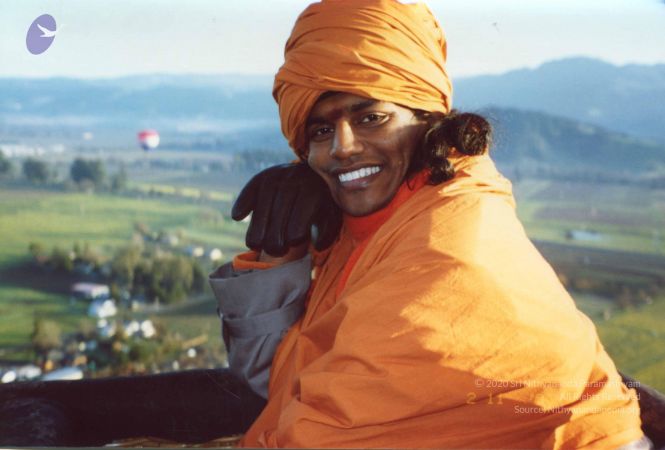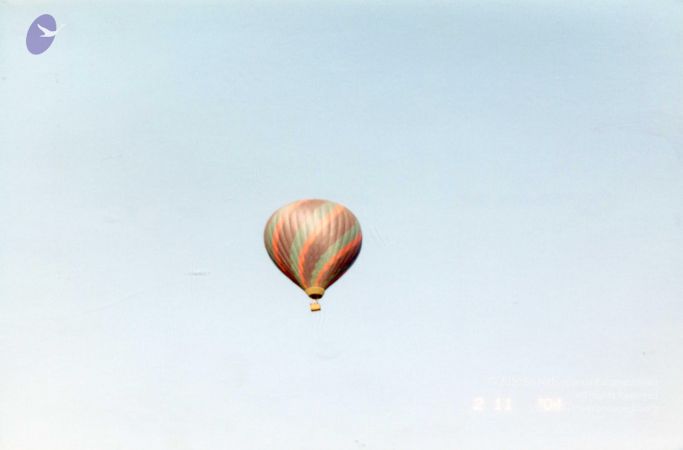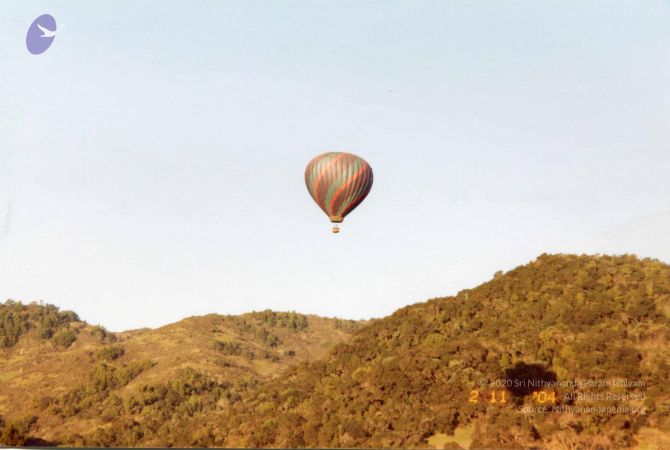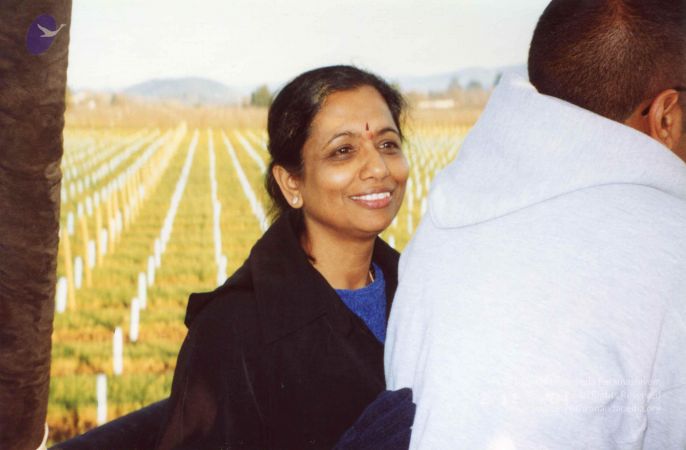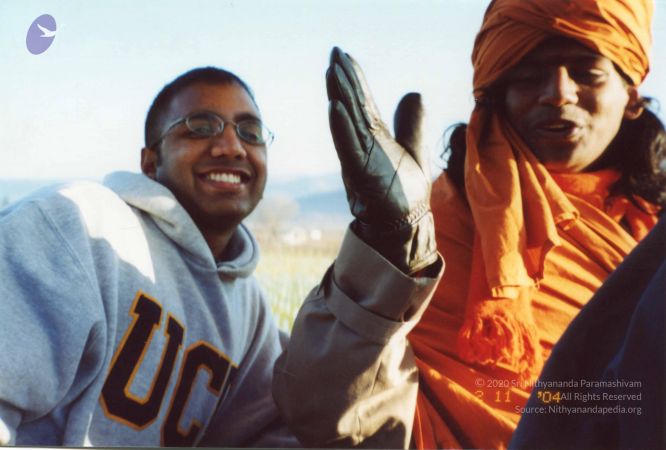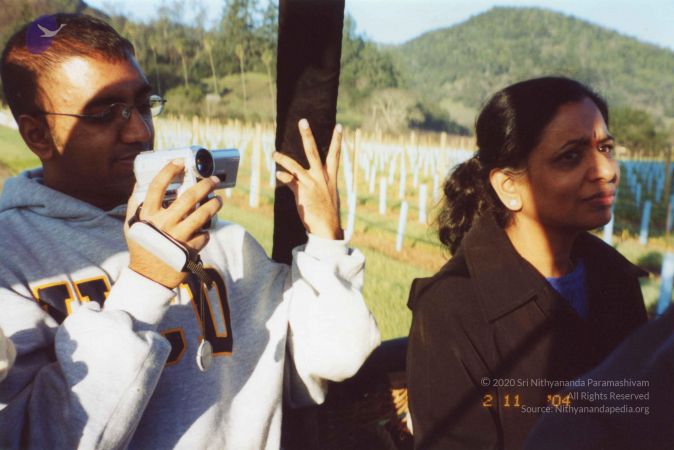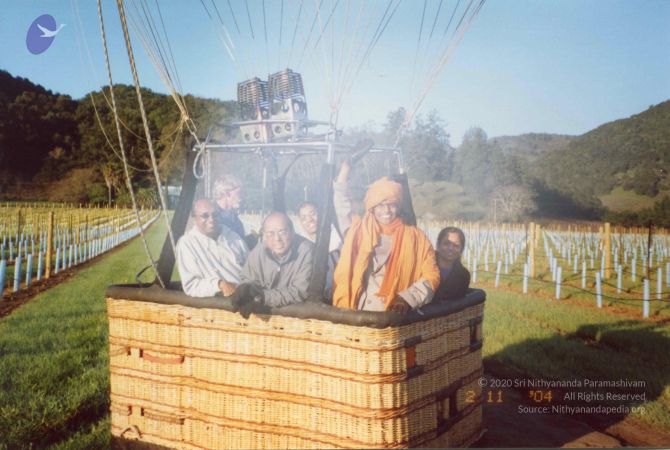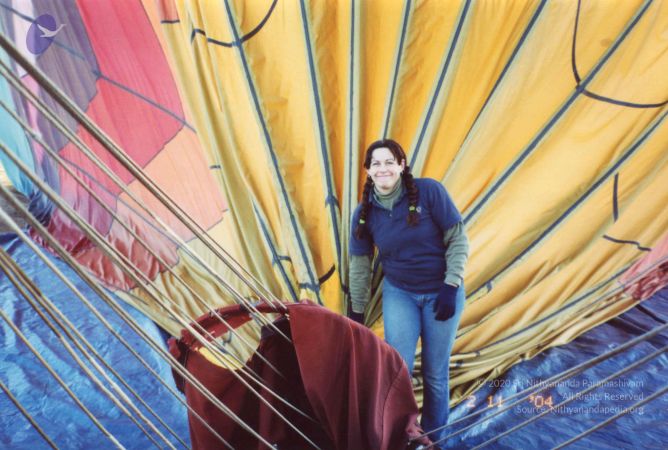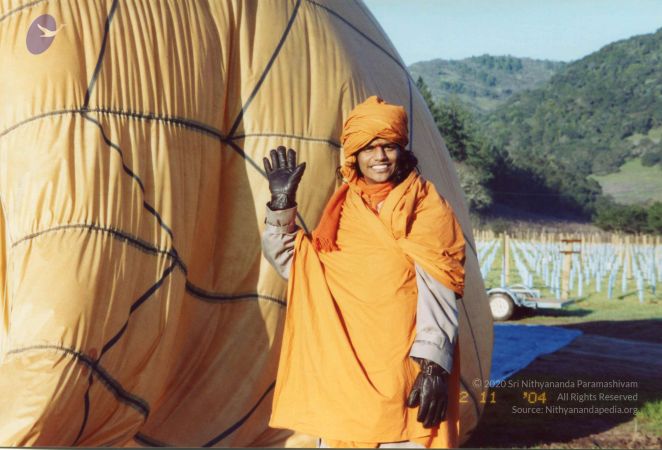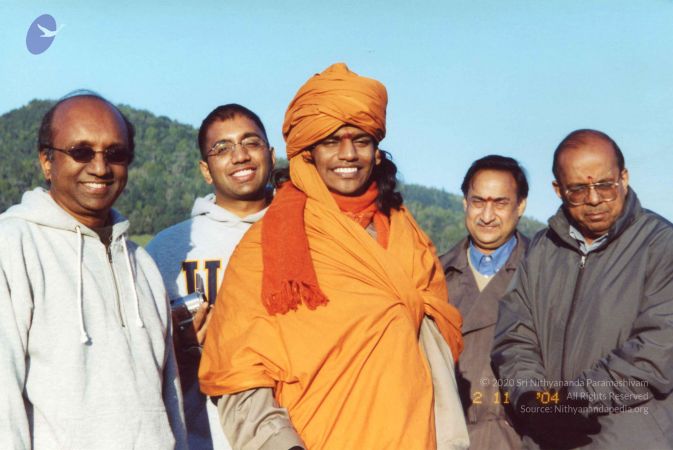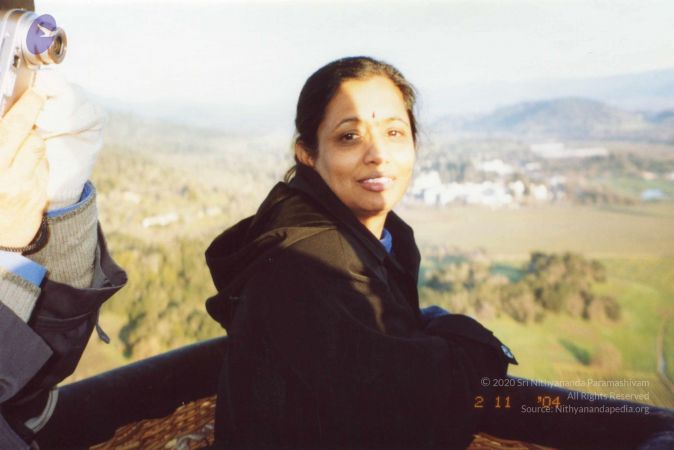February 11 2004
Title
Path of Meditation || Part 1 || (California)
Description:
In this video Supreme Pontiff of Hinduism HDH #Nithyananda Paramashivam Explains the various States of #Mind and how our Mind works.
Swamiji Explains Powerful truths about Four states of #consciousness, that human beings experience regularly are waking state, dream state, deep sleep state, and the fourth state, Turiya, the state of enlightened beings.
He went on to explain about Aparoksha jnana, the #Knowledge which is gathered, and Aparoksha jnana the knowledge which is Experienced.
Spirituality does not have any faith; it is rooted in Cosmic Truth.
Also Described the Details of Iyama, Niyama, Asana, Pranayama, Pratyahara, Dharana, Dhyana, samadhi Patanjali is an unabridged dictionary of world philosophy. Iyama: has five branches, ahimsa Non-violence, Astheya, non-stealing, Sathya, truthfulness, aparigraha, living with less, and brahmacharya, living like a God on planet earth, which includes celibacy.
While Expressing the Quality of the Mind, Swamiji simply explains that ‘’Mind and energy is like a mother in law and daughter in law, if you try to make them silent, they will fight more. They both are possessed by each other in the same way your mind is possessed by the consciousness’’
You can say yes to only one person, not to two-people.In the same way, if you say yes to the mind you will say no to meditation. When you get solidified, you get integrated, when you let go of your mind, it goes it's own way.
Only when you live Sathya, truthfulness, in mind, word, and deed, is it authentic.
The Whole perspective of science towards the east and spirituality, is the last word of science, ‘’everything that exists is energy’’. Where science ends spirituality starts.
When you live your life according to others’ choices or opinions you make your whole life a lie, and do not live the life you took birth for. At End, he also Explains about Varnashrama Dharma - The Ancient Varana System, which was Beautifully holding the Structure of the Society in its Authenticity. And in course time it got diluted by an Anti-HIndu Elements.
Video & Audio - Path of Meditation || Part 1
| Video | Audio |
Video & Audio - Path of Meditation || Part 2
| Video | Audio |
Video & Audio - Path of Meditation || Part 3
| Video | Audio |
Title
The Key to Your Life Energy || Part 1|| Initiation into Powerful Cognitions || 11 Feb 2004
Description
Name Of The Convention: Initiation into Powerful Cognitions Session on: The Key to Your Life Energy Part 1 Date : 11 February 2004 Venue : Newark, CA, USA
In this video Supreme Pontiff of Hinduism HDH #Nithyananda Paramashivam explains on the various aspects of living, astheya, aparigraha, brahmacharya, ahimsa. This video is an excerpt on the key to your life energy conducted in 11 February 2004 in Newwark, CA, USA. Here HDH also explains on the proper way of living a blissful life.
Video - The Key to Your Life Energy || Part 1|| Initiation into Powerful Cognitions
Title
The Key to Your Life Energy || Part 2 || Initiation into Powerful Cognitions || 11 Feb 2004
Description
Name Of The Convention: Initiation into Powerful Cognitions Session on: The Key to Your Life Energy Part 2 Date : 11 February 2004 Venue : Newark, CA, USA
In this video Supreme Pontiff of Hinduism HDH #Nithyananda Paramashivam explains on the various aspects of living, astheya, aparigraha, brahmacharya, ahimsa. This video is an excerpt on the key to your life energy conducted in 11 February 2004 in Newwark, CA, USA. Here HDH also explains on the proper way of living a blissful life.
Video - The Key to Your Life Energy || Part 2 || Initiation into Powerful Cognitions
Transcript
(0:16)
Pranayama is the next word, the next step. Prana means life energy. Don’t think its breath. Again the word Prana does not mean breath. Yama means handling it properly or using it ultimately. Pranayama, you need to understand this word totally. Using the life energy. Pranayama means using the life energy, using the life energy. Breath means something like air going inside your system and coming out of your system. But breath is not Prana, understand. Breath is like a lorry, Prana is like a stuff which goes inside the lorry. Understand one example, inside your company a lorry comes with lot of luggage, luggage is delivered and lorry goes back. Lorry is breath, lorry is breath and the stuff which comes inside is what is Prana. Prana is the subtle portion, a subtle energy which is being carried, which is inside the breath. Pranayama means using the life energy. I’ll give you a very simple technique of using the life energy. Now, as on now you breathe only till Anahata, till the heart centre because you have an idea, breathe means only air. Your lungs wants the air. So you breathe only up to the lungs, up to Anahata, up to heart centre. If you see the Buddha statues in Japan you will see with a big belly.
(2:19)
In Zen there’s a beautiful word - you should breathe till the Muladhara Chakra, till the belly, till lower abdomen. That is why they mention, they show the Buddha with a big belly. Because when they breathe, you will see the Zen people when they breathe, they breathe from the belly, from the lower abdomen, they don’t breathe from the chest. If you breathe only till the level of chest you’ll see, you’ll have a perfect lungs, you’ll have a good breathe, nothing wrong, you will not have the Prana. If you breathe as deeply as possible only then the Prana happens to you. The energy happens, otherwise you will have only the oxygen, oxygen does not mean energy. Please understand Pranayama means using the energy, taking the energy from the air. Now air goes in, oxygen is taken out, air comes out. When you breathe deeply, air will go in, not only the oxygen, the prana also will be taken in, the air will come out. To take the Prana from the air you need to circulate the air at least to the Manipuraka, navel center. At least the navel center should touch the… at least till the naval center you need to breathe. That is why the Ganesha is always shown with a big belly and the long nose. Long nose and the big belly and He is the embodiment of energy and intelligence.
(4:05)
When you have a long breathe, deep breathe you will have intelligence. Whenever you remember, when you go in the car or you read the newspaper, when you sit in front of the TV and watch, whenever you remember you just take deep possible breath, as deeply as possible. Deep breathe you will see your energy, the pran, level of Prana will become more and more, higher and higher, it will become beautiful. It will start expanding. Whenever you remember just take as deeply as possible the deep breathes. You will see your whole being will start living. Now, as on now you supply only oxygen to the body, never the breathe. Because oxygen separation happens in the lungs, but energy separation happens only in the navel center. Only in the naval centre the energy separation happens. Energy can be separated from the air only in the naval center. Only oxygen can be separated in this (chest) region. So all of you be aware only if you take deep breathes the energy can be separated from the Prana. That is why they call Pranayama is the basic need for the spiritual aspirants. You need to have more sharpness, more intelligence, more awareness. There are thousands of Pranayama techniques which is not necessary for all of you. This is a very simple Pranayama technique and very helpful. Whenever you remember immediately start breathing as lengthily as possible, continuously have the long breathe. After sometime it will become habit. After sometime it will become habit. Now you have very shallow breathe, very shallow just like your mind, very shallow. Any moment it can change. This moment you say somebody is friend, next moment you say he’s your enemy, because of him only I’ve been cheated. The very next moment you say, “No, no he has done everything, so much for us Swamiji.
(6:42)
Next step after the Pranayam – Pratyahara. Pranayama, Pratyahara and Dharana, these three are more mental. It works on the mental layer. The Yama, Niyama, Asana works on the body - physical. Pranayama, Pratyahara, Dharana works on the mental. Dhyan and Samadhi works on the spiritual. So let Me explain the next Pratyahara. Pratyahara means collecting your mind from the outer world. This you need to understand. Collecting your mind from the outer world. Now, as on now how you use your mind. You have a small experiment: when you go back to your house, sit just for 5 minutes and write down whatever thoughts comes to your mind honestly, you’re not going to show to anybody, you’re going to have it only for you. Just write down whatever thought comes to your mind. Whatever you think continuously you just write down. It you write down 5 minutes, just for 5 minutes, then you’ll understand, and then read it. Then you’ll understand if you’ve written 100 thoughts, more than 60, I say minimum, more than 60 will not be directly useful for your life. Either for your wealth or for your health or for your… even for your money-making, leave alone spirituality, it will not be useful even for your money-making. Most of the thoughts will be just vague thoughts. Your mind is almost like a chaos. Anything is happening in any place. Anything can happen in any place. Anybody can tell anything. It is more like a lunatic asylum. If you write down only then you will be able to understand here something is happening, there something is happening, that side suddenly something else is happening. Suddenly you’re thinking about India and the next moment you are here, the third moment you think let me go and watch TV. It is just like a lunatic asylum, what is happening you do not know at all.
(9:19)
Once in a lunatic asylum there was a man who thought himself as a Jawaharlal Nehru. He always used to think he is a Nehru and he used say he is a Nehru and dress just like him and have a rose flower. And move about just like Nehru always saying I am the Prime Minister, I am the Prime Minister of India. Somehow he was brought to the asylum, 6 months he was there. He almost became alright. He is going to be released. Just exactly few days ago, few days before his release by coincidence Jawaharlal Nehru came to visit that asylum. So the doctors thought it will be nice if we introduce this man to the Nehru, the original Nehru. So they took him, he was almost become alright, that man has become almost alright, normal. So he has to be only sent to the house, sent back, sent back to the home. So they took him and introduced him to the Nehru, “Sir, he is the man, his name is so and so. He thought of himself as you. He is crazy of you and he thought himself as Nehru. Now he has become alright, almost normal.” Then that man asked the Nehru, “Who are you?” Nehru said, “I am the Nehru, I am the Prime Minister of India.” and so and so. Then this man said. “Oh, is it so? Don’t worry, be here 6 months. They will make you alright. Just be here for 6 more months they’ll make you alright.” Just like this your mind is nothing but a lunatic asylum. If you write down then you’ll understand how your mind is. Each corner so many things are happening and you do not know what is happening.
(11:30)
There is a beautiful saying in Katopanishad, one of the Upanishad says, it gives an example of chariot, your body is the chariot, your five sense are the 5 horses and your Atman is the owner of the chariot. All the 5 horses, if they are controlled by your mind and properly handled then you’ll reach where you want to reach. If the horses are not controlled, if every horse goes in their own way, in their own direction, where you’ll reach? Where horses want to reach only you’ll reach there. You’ll reach nowhere.
(12:21)
Pratyahara means controlling or collecting, not even controlling, the word controlling has some bad connotation. Immediately we will be frightened. I don’t say control, I say there are so much of mental energy, mental thoughts getting wasted. Collect all those energies and try to put it in a proper use, try to use it. Most of the time when you do some physical work, especially when you do some physical work; if you are a person with mental work you don’t need to waste much of your mental energy. But if you are a person who is working physically, even if you work physically, your mind will be doing its work. Your mind becomes master of continuously doing its work without even your awareness, without even your participation. You will be doing something and your mind will be doing something. Mind becomes master of the art, then you will see much of your mental energy will be getting wasted.
(13:35)
So, whenever you work, whenever you do your things put your whole thing, put your whole mind at present. Try to live inside your body, then you will see Pratyahara will automatically happen. But what we do? We never try to live inside our body. Understand this one thing: you always live outside your body. If you are in the house you think of office. When you go to the office you think of the weekend. When you are in the weekend again think something about the office. When you are in the office again you think when I will go to house. When you are in the house when I’ll go to the theatre - when I will go here - when I will go there. If you’re in the house you can be sure your mind is not in the house. If you’re in the house your mind will be in the office. If you’re in the office your mind will be in the house. You live where you are not. That becomes continuous habit. You start living exactly in your boundary, inside your body the Pratyahara will automatically happen and unnecessarily you will not waste the mental energy.Unnecessary wasting of mental energy only leads to depression. Unnecessarily wasting mental energy only leads to depression.
(15:02)
I tell you, people and ask Me, “Swamiji how to control the anger?” Anger is a very big problem. Anger is a part-time madness. Madness is a full-time anger. That’s all. You see in angry... when you are angry or when you are mad both the time you do not know what you are doing. Both time you do not know what you are doing. When you are angry, when you are in the angry mood, when you are in the mood of anger you do not know what you are doing. Same thing, when you are mad you do not know what you are doing. So anger is nothing but the part-time madness. If you take up the full-time job you are mad. If you play the part-time role, you are angry, you are mad with anger, that’s all, nothing much. People come and ask Me, “How to control anger Swamiji?” I tell them a very strange solution, real solution. I tell them, “Take the photograph when you are angry. And have it in your drawing room. If possible worship it!” Looks very strange. But if you try then you’ll understand the whole anger will disappear. First thing you’ll understand how ugly you look when you are angry. You’ll be reminded continuously how ugly you look when you are angry. The next thing you will understand anger is an energy. Understand this one thing: just like money anger is an energy. If somebody does a job for you which is worthy of $1000, how much you’ll pay? Not surely even $900. If the man is really courageous to fight with you then he may get $990. At the most if you are little compassionate and charitable you may give a $1000 that’s all, but never more than that. But if the same man does a mistake of $1000, poor thing, how much of anger you will shower on him. How much of anger you pour on him? How much of anger? At least Rs 10,000 worth of anger you pour on him. If a kid, if a child cries you shout much more than that child. Your voice will be more louder than the child. Actually, most of the time they get frightened and stop crying. It’s not that they simply stop crying. They get frightened by your voice and they stop crying. Most of the time they get frightened and most of the kids you can see, if you start telling the stories immediately they will sleep, not by the power of the story they are afraid to listen to the stories. Anyhow... when you respect anger as a energy you don’t waste it. But most of the time you don’t have respect for your anger. You don’t understand that as a energy and there is energy.
(18:20)
If you spend too much of money you’ll become bankrupt. Same way, if you spend too much of anger you’ll become energy corrupt. A new word, understand, energy corrupt. That is why after shouting, after pouring out your anger, you feel so tired, you just fall in your sofa and ask for coca-cola or coffee. Actually you feel totally drained, you feel totally drained. A small outburst of anger can suck one day energy. It can suck whole one day energy. So wasting your energy, wasting your thoughts, wasting your mind makes you energy corrupt. Pratyahara means; understand how much you waste your energy. Again and again scan your life and start collecting your energy. It is more than gold. Anger is gold. I always tell the people, “We should create one more Lakshmi, Kopalakshmi. Actually Kopalakshmi, she is the energy you waste it. Because you don’t have respect for it. You have respect for money. That’s why you always keep inside and lock it. But if you don’t have the respect naturally you won’t keep inside and lock. Because you have respect you keep inside and lock, and use it only when it is necessary. On anger you don’t have respect you don’t have respect on your anger. You think, you feel, so you just throw it on any and everybody. Have understanding, have respect for your energy you’ll then you’ll understand what Pratyahara means.
(20:15)
Title
The Key to Your Life Energy || Part 3 || Initiation into Powerful Cognitions || 11 Feb 2004
Description
Name Of The Convention: Initiation into Powerful Cognitions Session on: The Key to Your Life Energy Part 3 Date : 11 February 2004 Venue : Newark, CA, USA
In this video Supreme Pontiff of Hinduism HDH #Nithyananda Paramashivam explains on the various aspects of living, astheya, aparigraha, brahmacharya, ahimsa. This video is an excerpt on the key to your life energy conducted in 11 February 2004 in Newwark, CA, USA. Here HDH also explains on the proper way of living a blissful life.
Video - The Key to Your Life Energy || Part 3 || Initiation into Powerful Cognitions
Title
The Key to Your Life Energy || Part 4 || Initiation into Powerful Cognitions || 11 Feb 2004
Description
Name Of The Convention: Initiation into Powerful Cognitions Session on: The Key to Your Life Energy Part 4 Date : 11 February 2004 Venue : Newark, CA, USA
In this video Supreme Pontiff of Hinduism HDH #Nithyananda Paramashivam explains on the various aspects of living, astheya, aparigraha, brahmacharya, ahimsa. This video is an excerpt on the key to your life energy conducted in 11 February 2004 in Newwark, CA, USA. Here HDH also explains on the proper way of living a blissful life.
The Supreme Pontiff of Hinduism Jagatguru Mahasannidhanam His Divine Holiness Nithyananda Paramashivam (HDH) is the reviver of #KAILASA - the ancient enlightened civilization and the great cosmic borderless Hindu nation. Revered as the incarnation of Paramashiva - the primordial Hindu Divinity, HDH has a following of 2 billion Hindus worldwide with de facto spiritual embassies in over 150 countries. He has worked untiringly for over 26 years for the revival of Kailasa, for global peace and to give super conscious breakthrough to humanity. He has survived the worst persecution of multiple assassination attempts on person and on character by anti-Hindu elements. He is collecting, organising, preserving, time capsuling, decoding, spreading and reviving 20 Million source books of Hinduism and the 64 sacred arts & sciences like Ayurveda, music, dance, sculpting, astrology, vastu and much more. Close to 20,000 hours of HDH’s timeless talks have been recorded till date (Sep 2020), which are a treasure trove of powerful cognitions to solve individual and global problems of any kind.
Video - The Key to Your Life Energy || Part 4 || Initiation into Powerful Cognitions
Title
The Key to Your Life Energy || Part 5 || Initiation into Powerful Cognitions || 11 Feb 2004
Description
Name Of The Convention: Initiation into Powerful Cognitions Session on: The Key to Your Life Energy Part 5 Date : 11 February 2004 Venue : Newark, CA, USA
In this video Supreme Pontiff of Hinduism HDH #Nithyananda Paramashivam explains on the various aspects of living, astheya, aparigraha, brahmacharya, ahimsa. This video is an excerpt on the key to your life energy conducted in 11 February 2004 in Newwark, CA, USA. Here HDH also explains on the proper way of living a blissful life.
The Supreme Pontiff of Hinduism Jagatguru Mahasannidhanam His Divine Holiness Nithyananda Paramashivam (HDH) is the reviver of #KAILASA - the ancient enlightened civilization and the great cosmic borderless Hindu nation. Revered as the incarnation of Paramashiva - the primordial Hindu Divinity, HDH has a following of 2 billion Hindus worldwide with de facto spiritual embassies in over 150 countries. He has worked untiringly for over 26 years for the revival of Kailasa, for global peace and to give super conscious breakthrough to humanity. He has survived the worst persecution of multiple assassination attempts on person and on character by anti-Hindu elements. He is collecting, organising, preserving, time capsuling, decoding, spreading and reviving 20 Million source books of Hinduism and the 64 sacred arts & sciences like Ayurveda, music, dance, sculpting, astrology, vastu and much more. Close to 20,000 hours of HDH’s timeless talks have been recorded till date (Sep 2020), which are a treasure trove of powerful cognitions to solve individual and global problems of any kind.
Video - The Key to Your Life Energy || Part 5 || Initiation into Powerful Cognitions
Title
Meditation-Asana, Pranayama and Pratyahara || Spiritual Discourse || 11 Feb 2004
Video - Meditation-Asana, Pranayama and Pratyahara || Spiritual Discourse || 11 Feb 2004
Transcript
(0:16)
Now it is time for us to enter into a meditation technique. It’s a very small meditation technique, just 15 minutes. It is not that technique is 15 minutes; you are going to practice it throughout the day; I am just going to show you how to do it. So it’s just a simple technique. I’ll show you how to do it. It’s a very simple technique. In the, throughout the day you can continue to practice. First thing: we’ll take few minutes to balance your body, to understand the Asanam. Asana means you should not have any pain or uneasiness in the body. How to do that? After sitting in a comfortable position from the toe to body, just remember your whole body and feel whether it is comfortable or not, whether it is relaxed or not. if you feel your knee is not relaxed, just tense it and relax. You will see that it will fall in relaxation. You should just check your whole body for 2-3 minutes and feel whether it’s comfortable or not. That's the first step. Please listen, then you can do it. The next step: start very slow steady deep breathing - Pranayama. Third step: your inner chattering, from where your inner chattering or thinking starts just be there. Just watch from where your thoughts come, any thought may come, don’t suppress it. Whether it is good or bad don’t label it. Any thought may come just watch it. These are the 3 steps Asana, Pranayama, Pratyahara.
(2:09)
First we shall sit straight. Close your eyes. Close your eyes, sit straight. Meditation Process begins... Om Nithyananda Paramashivoham
See from the toe, first check the legs if you are comfortable. Come up... whether your feet are comfortable or not. Just give instruction to your feet - please be relaxed. Your body will simply obey you. Just tell your body, tell your feet please be relaxed. Tell your ankles please be relaxed tell your knees please be relaxed.
Tell your thighs to be relaxed. Tell your hips to be relaxed. Guide your stomach to be relaxed.
Tell your chest to be relaxed. Tell your neck to be relaxed. Tell your face to be relaxed. Tell your body totally to be relaxed and comfortable. Start observing your breath. Sart as deeply as possible breathing. Start breathing as deeply as possible to touch your navel.
Start breathing as deeply as possible... as deeply as possible.
Start watching your thoughts. From where your thoughts raise... just see the root from where your thoughts raise.
Watch near your navel center, that is the place where thoughts raise. Watch as deeply as possible.
Watch as deeply as possible.
(14:36)
Om Shanti Shanti Shantihi. Relax, you can open your eyes. Do this throughout the day that’s enough. Whenever you remember, start practicing it. Don’t create guilt ‘Oh, I have forgotten’. Then again that’ll become one more thought. Whenever you remember, just watch your thoughts, what is happening. So let you have this meditation and let this understanding work miracles inside you. Let you enter, and be, and become Nithyananda. Thank you.
(15:26)
Title
Difference Between Vipasana and Upasana || Spiritual Discourse || 11 February 2004
Video - Difference Between Vipasana and Upasana || Spiritual Discourse || 11 February 2004
Transcript
(0:16)
Q: Swamiji, what is the difference between Vipasana(sitting in silence) and Upasana (chanting of mantras)?
(00:26)
Swamiji: There are two things. Vipasana and Upasana. Upasana means chanting the mantra. Vipasana means paying attention to the breath. When you chant the mantra, naturally all your inner chattering gets slowly, slowly reduced, and your mind is focused on one mantra. Finally you have to come out of that word also to reach the wordlessness or the Bliss. Wordlessness is Bliss.
(00:57)
With Upasana, with mantra, you concentrate all the power in one place, one thought, then you try to escape from that thought also. That is the one step. In Vipasana, you directly slip into that Bliss, thoughtlessness. When you observe the breath, when you put your concentration on the breath, directly you will see, you reach the place where there is no thoughts. That is the difference. Ofcourse, these are such subtle techniques only by practice you will be able to understand. Looks very simple. The technique when you put the thing into practice, then you will be able to understand.
(01:40)
With mantra, your whole mind will be concentrated on one word. Instead of one thousand word, one word. Then from that one word also you will escape. You will enter into wordlessness. With breath watch, with Vipasana, from the very beginning, you will see, you are slowly, slowly entering into the wordless state or the wordless Bliss. The inner chattering becomes lesser and lesser. The traffic becomes lesser and lesser. The awareness, the moments of awareness becomes more and more, and even without inner chattering you will be able to live joyfully, happily. You will run your regular life, a normal life but without worry and the inner chattering. You will be there as it is, just bubbling, energetic.
(02:24)
Vipasana is a direct technique, because I can say, Upasana has made many people enlightened no doubt but the Vipasana has made most people enlightened. In the mantra, your effort is necessary continuously. With Vipasana, after some time, it becomes a total energy phenomena. Instead of you doing it, that will start doing you. To catch the fire, it is very easy. To catch the glimpse of the awareness, to get the blueprint of Enlightenment, blueprint of Enlightenment only I call it as a first experience, Satori. To get the blueprint of Enlightenment, it will be easy through Vipasana than through Upasana.
(03:14)
Title
How to Find Particular Mantra is Suitable for Me or Not || Spiritual Discourse || 11 February 2004
Transcript
(0:16)
Q: Swamiji, how to find out whether a mantra is suitable for me or not?
(00:24)
SWAMIJI: The one simple thing, whenever you chant that mantra, you will feel a easy, relaxed, smoothness. See, your breath has got a capacity to continue till your words end. You need to understand two things. In your inner chattering, when you talk to yourself, in some place you will see, after two-three words also, your breath will be continuing. At one some point, within two-three words, your inner chattering will be broken, you will have breath and then you start talking.
(1:03)
You understand, it is a very deep phenomena, subtle phenomena. You need to understand. See, whenever you are talking with yourself, at some time, you will see, every one word, every one thought your body will be taking the breath. Sometime, even continuously for six-seven words, your body will not be taking the breath.
(1:28)
Your breath and your inner chattering has got a close connection. Sit silently and try to chant that mantra. Till full mantra, if your body does not take the breath, does not feel uncomfortable, if your body is allowing you to continuously chant the mantra, then mantra will work for you.
(1:50)
For some people, if they take ‘Namo Narayana’, by the time they come ‘nara,’ the breath will break. And then, they have to stop and then say, ‘enaye’. For some people, ‘Om Namah Shivaya’, in that Namah Shivaya, va itself, the breath will break. So, this is the one method to find out to whether the mantra is going to suit for you or not. Only these two things. If you chant consciously, any mantra will help you. If you chant unconsciously, no mantra is going to help you. Even if your Guru is powerful Guru, highly powerful Guru, Enlightened, no problem; If YOU don’t practice it, nothing can happen. Only you have to do it consciously.
(2:38)
Photos
Some photos taken during a house visit in California
